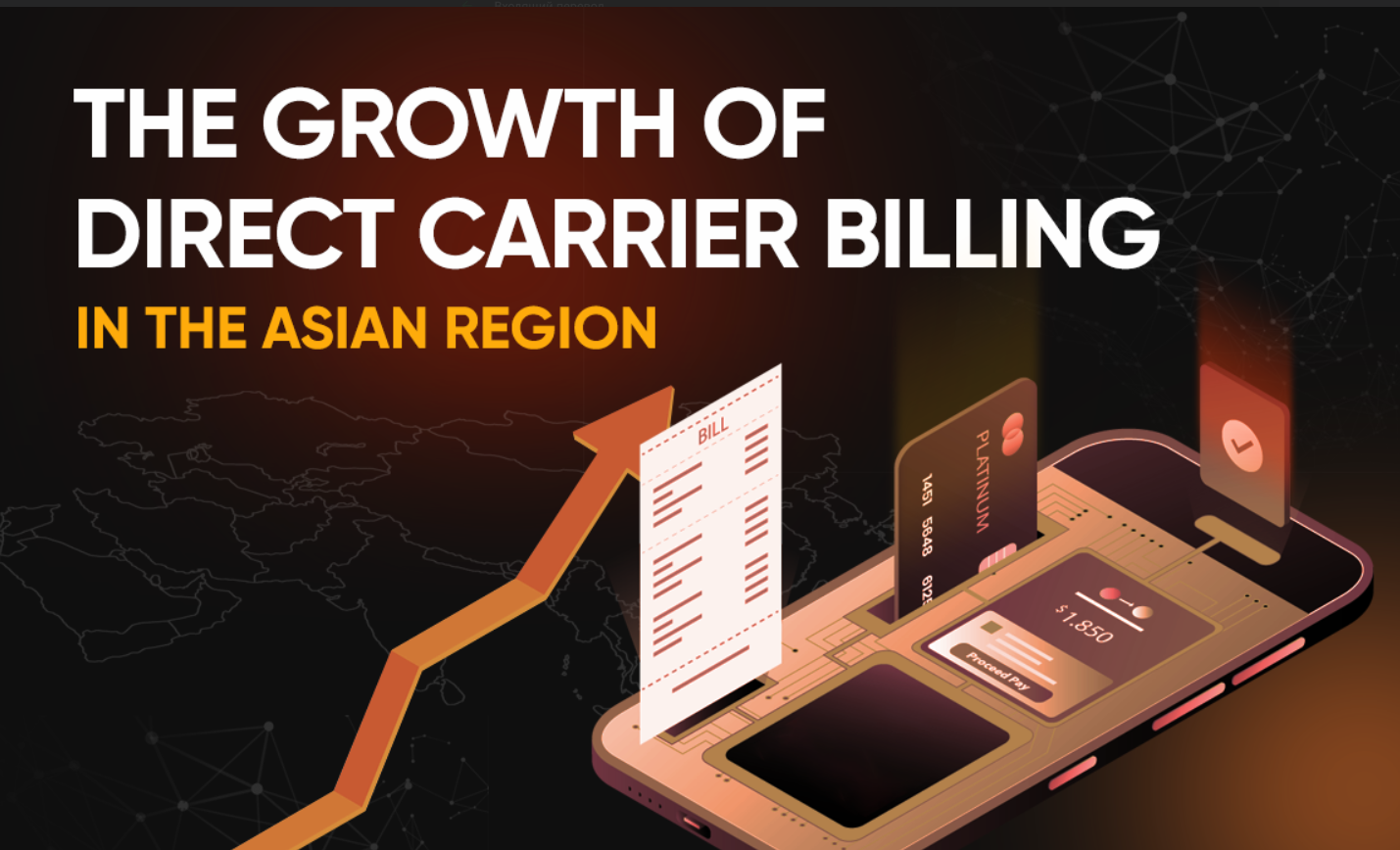
The Continued Growth of Direct Carrier Billing in Asia
In the history of Asia’s financial services ecosystem, payments have never been more essential than they are now. Over the last few years, Asia has outperformed all other regions in terms of growth in payments-related revenues.
In addition, the area is the biggest contributor to global payments revenue, accounting for more than $900 billion in revenue in 2019, which is almost half of the worldwide total. Additionally, the importance of payments in Asia’s entire banking environment has grown, with payments now accounting for 44 percent of total banking revenues, up from a third as recently as 2007.
Currently, Asia is experiencing significant changes in the field of payments. It is expected that by 2022-23, the annual income of the Asian payment sector will exceed $1 trillion. Also, a dramatic shift was observed in digital payments due to Covid-19 pandemic. As a result, the complicated epidemiological situation contributed to a situation where people stayed at home most of the time and made purchases online.
Today, we have several payment methods available to us, such as paying via bank card, bank transfers, e-wallets, QR code, as well as direct carrier billing (DCB). The latter payment method is gaining popularity among users and has all the prerequisites for further development.
Direct carrier billing is a kind of digital payment that enables consumers to make payments online using mobile devices such as smartphones, tablets, and smart TVs that are internet-connected. The service is compatible with both prepaid and postpaid connections, and money may be taken from the load or added to the next month’s mobile bill in the former instance.
Growth Inducing Factors
The Asia Pacific direct carrier billing platform market is segmented into India, Thailand, Japan, South Korea, Australia, New Zealand, China, and Indonesia. China’s market is growing steadily due to the country’s strong demand for mobile payments. According to research, about 92% of the urban population, as well as 47% of the rural population in China, use mobile payments.
The increasing number of people using smartphones is directly related to the development of m-commerce and e-commerce. Japan is a market leader in terms of DCB adoption, owing to the country’s high rate of smartphone adoption and use. Mobile technology advancements are apparent, with Ovum predicting that the Asia Pacific area accounts for well over half of worldwide DCB sales.
The Asia-Pacific direct carrier billing market is expected to expand at a 14.52 percent compound annual growth rate (CAGR) between 2019 and 2028, with Japan presently leading the way in terms of adoption of this mobile-based digital payment method.
Top Asian Offers
| Offer | Payout Rate |
| ID Download PIN | $0.28 |
| PH Download PIN | $0.28 |
| ID Education PIN | $0.24 |
One of the primary causes of DCB’s meteoric rise is the region’s consistent increase in mobile phone and smartphone usage. Due to the growing smartphone adoption in India, China, and Thailand, companies have an excellent chance to provide direct carrier billing.
Cash is usually favoured over credit cards in Asia, since plastic money is still seen as a sign of western materialism. For example, in India, just 2% of the population has a credit card, despite the fact that smartphone usage is among the highest in the world. This implies that enterprises, particularly startups, e-commerce companies, small businesses, and game developers, have many possibilities to reach a sizable consumer base that does not utilize credit cards.
People who do not have bank accounts will be able to pay online via DCB
Along with the growth of cross-border ecommerce, Asia has developed a thriving digital payments industry that now includes a variety of digital payment methods, including bank transfers, e-wallets, QR codes, credit cards, and debit cards. The majority of these payment methods, nonetheless, require the user to have a bank account.
In comparison with other forms of digital payment, direct carrier billing does not require a bank account, and customers may charge their payments to mobile phone bills. This implies that DCB is a more convenient form of online payment, allowing a greater segment of unbanked people to participate in cross-border e-commerce.
Consumers are looking for a safe and secure payment solution
Direct carrier billing is becoming the preferred method of paying for online services using mobile devices for an increasing number of people due to its inclusiveness and convenience of use. Moreover, compared to credit cards, DCB is a more secure payment method. Thus, customers can make purchases without being concerned about the safety of their personal data and protect themselves from online fraudsters.
The Asian market has a huge untapped potential for promoting safe, transparent and convenient payment methods. Such a solution is direct carrier billing. The advantages of this technology will bring a lot of benefits to the customer base in this region and expand the opportunities for digital service providers. VIA OpenPlatform simplifies the process of getting started with DCB. It is your one-stop payment gateway solution that will help you expand your company further throughout Asia.
Conclusion
The direct carrier billing industry has grown at a breakneck pace in both developed and emerging nations over the past few years. The increasing use of smartphones has a significant impact on the market for direct carrier billing. In the contemporary era, a significant portion of the world’s population remains without access to fundamental financial technology such as debit and credit cards.
In order to encourage people in this group, many FinTech firms are investing heavily in the development of strong and simple-to-use technology. Individuals benefit from constant innovation via improved systems and payment methods. Thus, the DCB solutions give the opportunity to unbanked users from Asia to join the digital services’ consumer society and online shopping.







 Searching...
Searching...